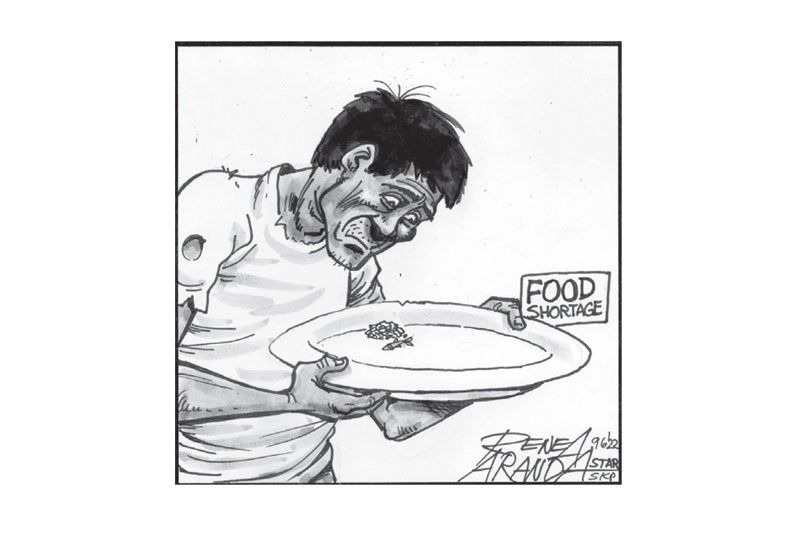EDITORIAL - Rising hunger

Food items account for a hefty share of the consumer price index. So it’s not surprising that with inflation soaring to 5.4 percent in May – the highest in three-and-a-half years – more Filipinos also experienced involuntary hunger in the first quarter of the year, according to a survey conducted by Social Weather Stations Inc.
The SWS survey, conducted from April 19 to 27, showed 12.2 percent of the respondents saying they experienced involuntary hunger at least once in the first three months of 2022. The figure, which is 0.4 percent higher than the 11.8 percent recorded in the fourth quarter of 2021, is equivalent to an estimated 3.1 million families. With an average family size of five, that’s about 15 million Filipinos.
The Philippine Statistics Authority attributed the inflation spike to soaring fuel prices, which pushed up transport costs, and which in turn spilled over into a wide range of food and non-food commodities. With energy experts warning that petroleum prices will continue to surge as Russia presses its invasion of Ukraine, fuel’s inflationary impact on food is expected to persist, worsening hunger incidence.
Apart from fuel, the Ukraine conflict has disrupted global supply chains and caused shortages in critical inputs for food production, particularly fertilizer and wheat as well as corn for animal feed. As a consequence, experts are warning of a looming food crisis in the second half of the year.
The Philippines, which is wholly dependent on imports for high-yield chemical fertilizer and wheat for flour, is particularly vulnerable. The country imports rice to stabilize supply and prices. But the country’s top sources of imported rice have announced a likely suspension of their exports amid the supply crunch.
With supplies tightening and prices rising, hunger incidence is expected to increase further, particularly among the 43 percent of the respondents in the SWS survey who rated their families as poor and 31 percent who describe themselves as food-poor. It’s a problem that calls for something more than periodic cash doleouts. The poor and hungry need sustainable livelihoods to ensure that three square meals a day won’t merely be an occasional treat.
- Latest
- Trending


























